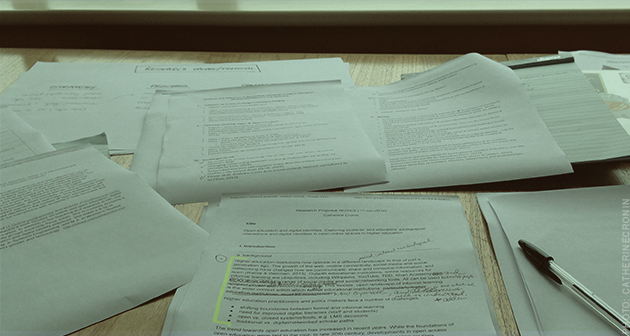
Using research to help change the narrative AFSC
Covering violent extremism is one of the world's toughest beats right now. And writing like an expert about anything in the foreign policy space grows increasingly difficult as newsrooms continue to cut foreign budgets—especially when readers don't even click on the stories journalists write.
Unfortunately, these challenges have led to some troubling trends in reporting on groups like ISIS, al-Qaida, and the like. For example, our recent media analysis of violent extremism coverage shows that journalists writing on this issue use other media as their main source of information. Equally troubling is that in today's media, stories about violent extremism typically follow a pattern that erroneously links Islam and extremism, over-covers violent responses to conflict—especially military interventions—and sets up groups like ISIS as decontextualized caricatures.
The good news is that there are ways to write like an expert about violent extremism without falling into these traps. Here's how.
Five ways to write like an expert about violent extremism
- DO tell stories that focus on actors' humanity, especially when you are writing about groups that have historically been marginalized by U.S. media—like Muslims. Humanizing subjects can be challenging—especially when writing about violent extremism—because the acts of violence themsevles can easily take over the narrative (more on that below). But humanizing individuals is key to readers and policymakers understanding all actors in a story as people, not as simply perpetrators or victims.
- In particular, DO NOT use language that links all Muslims with extremism, or any language that portrays any social group as homogeneous and monolithic. Advocacy groups like Race Forward and the Institute for Social Policy and Understanding have excellent resources for journalists writing about diverse communities.
- Also, DO NOT edit out complexity. There's no way around this—when writing about violent extremism, it is crucial to at least try to convey the complexity of the situation on the ground in the present and historically. Of course, most pieces are short and can't do a deep dive. But there is a world of difference between repeating current narratives in a short piece because readers supposedly can't or won't deal with the bigger picture, and trying to incorporate the root causes of this terrible violence in even small ways. Journalists have a critical role to play in bringing facts to light when it comes to matters of war and peace. These facts are too important to be left out of the story. Writing about the historical roots of this complex situation is also a great way to get an edge over much of the current reporting on extremism, as so much of it lacks depth and even basic research.
- DO cover alternatives to violence. Part of bringing all the facts to light in reporting on violent extremism is to bring to light the facts of peace building as well as warmongering. It may seem unlikely, but there are efforts to build peace and deal with current extremist conflicts nonviolently—whether at the U.N. or on the ground. So few people report on these aspects of conflict resolution that simply including them will help make any story sound novel.
- DO follow the lead of other pros. Lots of journalists are doing an excellent job covering this issue. Following their grounded, historically nuanced work is one way to write like an expert on this issue.
These are just a few tips to help journalists with limited resources and time write like experts on this important issue. But this isn't an exhaustive list. Tell about what we missed on Facebook or in the comments.